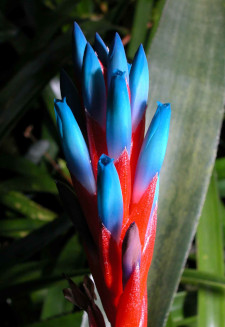Kurze Geschichte des Botanischen Gartens Halle
Botanical gardens have their origin, although in a slightly different meaning, in the European medieval. Salerno (founded 1309) and Venice (founded 1333, both in Italy) are among the oldest ones. However, the distinction between a Botanical Garden in the current sense and the herbal gardens almost always associated with cloisters remains hazy in that time. Their main purpose was to provide medics with medicinal plants (and the cloister kitchens with spices).
In 1698 the Botanical Garden in Halle started similarly: Elector Friedrich III donated a part of his electoral garden to the medicinal faculty of the University in Halle, which was founded 4 years earlier in 1694. The much older garden of the University of Wittenberg (founded 1502) disappeared after the unification of the two universities in 1817.
The early years of the 'hortus medicus' were described as not really successful. The directors changed frequently due to overwhelming problems. In 1749 only 191 species were counted in the garden. A permanent short of money, the need to produce vegetables for their own use instead of medicinal plants and devastations by men and cattle hindered sustainable work in the garden. It is reported that even the water from the wells was so bad that people transported water from the nearby river Saale to the plant beds.
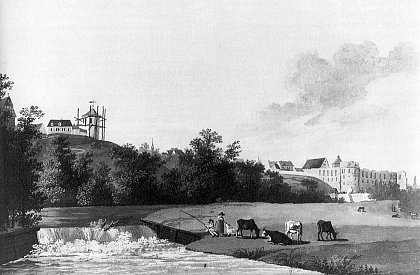
Observatory 1788
This changed rapidly in 1787 when the chancellor of the University, Karl Christoph von Hoffmann (1735-1801) extended the garden to its present size. He was very fond of gardening and was influenced by the ideas of the English landscape gardens. Thus, he shaped his own garden close to Halle (Palace Dieskau) and the Botanical Garden.
During this period famous natural scientists, for example Johann Reinhold Forster (1729-1798) who participated Cook's second world cruises and Philipp Caspar Junghans (1736-1798) were directors of the garden. Due to their connections with other scientists and travellers many newly discovered plants have been brought to Halle. The first glory days of the garden were initiated.
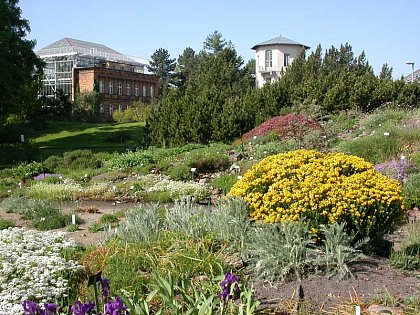
Observatory with Tropical Greenhouse and alpine plants
The observatory and well-known symbol of the Botanical Garden was built in 1788 by the architect Carl Gotthard Langhans (1733-1808). Langhans is famous for building the 'Brandenburger Tor' in Berlin. The style of the observatory is neo-classicistic, the 4 balconies point in the four directions. Curiously, before the foundation of this observatory a heavy disputation about the right placement of this building in the vicinity of Halle was going on. From this disputation it can be concluded that Halle suffered during this time from heavy air pollution by the near saline.
Under the directorship of Kurt Sprengel (1797-1833) the Botanical Gardens flourished. He founded the seed exchange among the Botanical Gardens and extended the plant collection considerably. Johann Wolfgang von Goethe visited the garden on July 11, 1802. In 1825 7.000 species were counted. The successor of Sprengel, Diederich F. L. von Schlechtendal (1794-1866) proceeded with the career of the Garden. The plant collection was further extended and first specialisation started. However, despite the great success of the garden in science and public the situation in the Garden was not splendid at all. Vegetables were grown and plants had to be sold for maintenance.
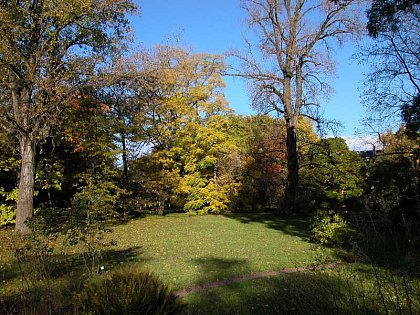
Autumnal arboretum
In the end of the 18th century many greenhouses were constructed. The tropical greenhouse was build in 1872, the Victoria-greenhouse followed in 1902. The garden gained much attention for morphological and eco-morphological studies by Wilhelm Troll and later on by Hermann Meusel and students. Recently, additional modern greenhouses have been build and old ones renovated.
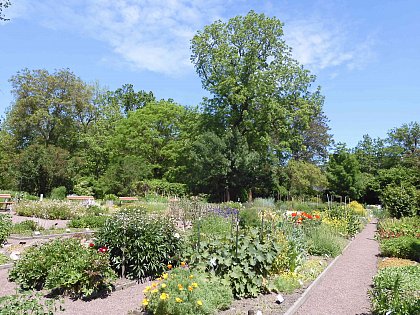
Systematic section

